
Integrated Pest Management in a Zoological Theme Park, Wing Beats the Journal of the American Mosquito Association
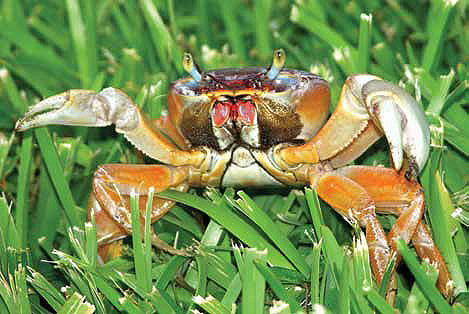
Effective mosquito control is critically important to reduce the transmission of debilitating human and animal diseases. For example, in zoo facilities, diseases such as avian malaria, West Nile virus, St Louis encephalitis virus, and many others may result in debilitating illness and even death.
Parrot Jungle was a roadside tourist attraction that opened its doors in 1936 about 15 miles south of Miami. This privately owned park featured a parrot show and had a small animal collection. My tenure as the horticulturist at Parrot Jungle began in 1976 where my role was maintaining the extensive collection of ornamental plants that filled the park’s 14 acres. Since I was responsible for the application of insecticides, I was also responsible for daily mosquito spraying before the public and employees entered the park.
Throughout the years, I used insecticides and aracaricides for many applications from the control of spider mites, white flies and scale insects to mosquito control. For mosquito control at the park, many insecticides we reused over the years as new products became available, some older products lost their effectiveness. Indeed, it is now recognized that one of the most challenging aspects of mosquito control is the intrinsic capacity of mosquito populations to change under selective pressures, such as occur during the heavy usage of a specific insecticide (Linser et al, 2007) producing resistant mosquito populations.
In 1988 I became the director of horticulture of Parrot Jungle when it was purchased by a new owner and the animal collection was greatly expanded. This new position enabled me to begin working with a concept called Integrated Pest Management (IPM), a program that encourages the use of beneficial insects, a more judicious use of insecticides, and better cultivation techniques. I had already some success with the control of spider mites on musoid plants, such as bananas and plantains, through cultivation techniques (Shimonski 1991). I was learning that insect control needed to be based on scouting, understanding the behavior and ecology of the particular insect pest and only spraying on an as needed basis. Insecticide use seemed to eliminate susceptible individuals leaving resistant individuals to reproduce, passing on genes associated with resistance mechanisms to their offspring.
Parrot Jungle was eventually relocated and a new much larger park was built from a bare site in the City of Miami. In 2002 the 18 acre Parrot Jungle Island opened and upon its five year anniversary in 2007 the name was changed to Jungle Island to more accurately reflect the expansion of the animal collection and shows.
In 2005 I began a mosquito larval control program at the park. This was one of the strategies that I developed for the park ’s membership in the EPA’s Pesticide Environmental Stewardship Program.
The need for this program came about because of several reasons. First, there was a successful Integrated Pest Management (IPM) and Plant Health Care program in place that had allowed this newly built park to establish lush landscape throughout 18 aces without the use of insecticides or commercial fertilizers. However, adulticiding was still being performed for mosquito control on a daily basis and may have adversely affected beneficial insects, impacting an important element of our IPM program. Second, a large collection of bromeliads that numbered in the thousands was a featured part of the landscape. Unfortunately, the majority of the bromeliad species had phytotelmata where mosquito larvae could successfully breed. Phytotelmata are water collections found in leaf axils of numerous plant species, such as many bromeliads or the large ornamental bracts of the Heliconia inflorescence and even the water holding pitchers of insectivorous plants.
It was necessary to fog the park at least once a day in an attempt to control mosquitoes. Fogging was done every morning at sunrise before employees started the first shift at 7:00 am. Outdoor insecticidal aerosols must drift in order to be effective. Great care had to be taken so the fog would not enter the animal exhibits or pass over any bodies of water. The insecticide application was difficult to control since most mornings had at least a slight breeze and there are many buildings and exhibits throughout the park that blocked movement of the fog cloud. Ultimately this method of control was not very effective. Employees and visitors to the park would often be annoyed by mosquitoes throughout the day and security guards at night.
In early 2005 I invited Dr George O’Meara from the University of Florida Medical Entomology Laboratory to walk through the park to give me some insight as to the possibility of a mosquito larvae control program that would compliment our existing IPM program. Dr O’Meara noted that the mosquitoes on the 18 acre site were most likely from the site itself since the park was actually on an 86 acre island between downtown Miami and South Beach.
A weekly mosquito larva sampling program was star ted on the bromeliad collection at the park. Since beds of bromeliads consisted of single species, the plan was to identify the sampling locations as individual plant species and then randomly collect, identify and count any mosquito larvae collected in each location. I also identified the species of mosquitoes that were present in the bromeliads.
Once the locations of the mosquito larvae were identified a group of biochemicals would be tested on the bromeliads and larvae. Prior to implementing this program, my previous experience with larval control on bromeliads had been disastrous. The chemicals had been very phytotoxic and the bromeliads burned and died. This time, however, a variety of different larvicides would be used including:
- Bti - Bacillus thuringiensis var israeliensis
- Bs - Bacillus sphaericus
- Altosid® - methoprene, an insect growth regulator
- Arosurf® MSF - a monomolecular surfactant film
- Agnique® MFF- a monomolecular surfactant film
- Garlic Oil
My hope was that environmentally safe methods of mosquito larvae control could be identified that were easy to apply, effective and safe for the bromeliads, the human applicator and the zoo animals. As with the other IPM components used at the park, I also wanted to make this program cost effective and eco-efficient, since the cost of this program would ultimately determine its success.
Within two months I had identified three species of mosquitoes that inhabit the bromeliad phytotelmata: Aedes aegypti, Culex quinquefasciatus and Wyeomyia vanduzeei. Rarely, other species were found in bromeliad phytotelmata, such as Cx nigripalpus, Wy mitchellii.
I started testing the six biochemicals on the bromeliads with immediate results. The two monomolecular films both burned and killed the bromeliads. They could no longer be used. The garlic oil was sprayed full strength directly on the foliage of several species of bromeliads that had been washed out (no larvae left in the leaf axils) as a repellent with no apparent effect. Larvae were found in the leaf axils within a week.
The Bti, Bs and Altosid all proved successful in controlling larvae with no apparent damage to any of the bromeliad species. Success was determined during the sampling the following week. If no larvae were found in bromeliads that had been treated previously the treatment was considered a success. These three products were applied to the bromeliads by using a homemade shaker made from a half gallon plastic bottle with holes punctured in the bottom.
I also tested the Bti, Bs and the Altosid on the three mosquito species in plastic containers. All three products successfully controlled the mosquito species. The Bti and Bs usually killed all larvae within 24 hours. Since the Altosid acts as an insect growth regulator and prevents adult emergence, results could not be determined for up to a week. This became an issue when the bromeliads would be sampled weekly. The larvae would have to be collected and stored for up to a week to determine if the Altosid was working. Eventually in the interest of efficiency Altosid was no longer applied to bromeliads.
One other species of mosquito was collected offsite and tested with the three previous mosquito species. This was Deinocerities cancer, the crab hole mosquito whose larvae develop in water in the burrows of the native blue land crab, Cardisoma guanhumi. The larvae were collected at the Montgomery Botanical Center in Coral Gables, one mile from the original Parrot Jungle and about 15 miles from Jungle Island. This species of land crab lives in holes that it digs down to the water table. Since the original Parrot Jungle had hundreds of land crab holes onsite and nearby and since the main blood host of De cancer is birds (the majority of the animal collection at this park was birds), I thought it would be enlightening to test this mosquito in the same manner as the others. The Bti, Bs and Altosid were effective in killing De cancer.
After two months of sampling larvae and testing biochemicals it appeared that mosquito larvae were being effectively controlled in the bromeliad collection. There was less of a mosquito problem in the park, but often the action threshold was still being met. The action threshold was four mosquitoes landing on my pant legs within two minutes of walking into an area of the park.
The main source of mosquitoes in the park turned out to be the 20 storm drains located on the property. To collect the larvae in the storm drains I used a five inch wide brine shrimp net on a 10 foot long PVC pole. The pole would be lowered into the drain, five sweeps would be made to collect the larvae. The sampling was done once a week concurrently with bromeliad sampling. There are different sized drains that hold between 70 and 90 square feet of surface water.
Only two species of mosquito were found in the drains: Ae aegypti and Cx quinquefasciatus. In some drains, Cx quinquefasciatus seemed to number in the thousands. I began to test Bti, Bs, methoprene and the MMFs in the drains. All of these bio-rational chemicals work to some extent. After three years I have come to use Bti, Bs and the MMFs for storm drain control on a rotational basis because I would like to reduce the likelihood of resistance being developed in the local mosquito population. Methoprene is not used in the storm drains for the same reason it is no longer used on the bromeliads, the mosquito larvae would have to be collected and stored for over a week to determine efficacy.
Once the storm drains were brought into the weekly sampling and biochemical testing pro - grams we no longer approached the action threshold. Since August 2008 it has not been necessary to spray for the control of mosquitoes at Jungle Island. This is significant considering I have been spraying to control mosquitoes almost daily since 1975 first at Parrot Jungle and then briefly at Parrot Jungle Island.
It has been very important to scout for adult mosquitoes on an almost daily basis. I have been continuously challenged whenever the action threshold has been approached. The breeding flock of flamingos builds their nests on an island in the main lake onsite. During breeding season the island is kept flooded so that the birds can maintain their nests of mud. We now let the island dry out every few days to kill the Cx quinquefasciatus larvae that were present. Automatic animal watering basins, aquatic reptile housing, and anything that can hold water for a few days needs to be inspected and cleaned on a regular basis. I have found that sanitation is also a very important component of an effective and comprehensive mosquito control program. The success of Dr William Gorgas with the control of the yellow fever mosquito, Ae aegypti in Havana and the Panama Canal in the early 1900’s shows chemical control is not the only method that needs to be considered for the control of mosquitoes. Sanitation and sound construction methods to remove man-made sites for water retention may be more critical in many instances than the use of chemicals (Martin 1947).
This mosquito larvae control program has been very successful, and cost effective. The park saves about $7000 a year in chemical and labor costs. Implementation of an IPM program that does not require aerosol spraying is an advantage because beneficial insects are not being impacted, therefore the populations of insect predators can establish themselves on the site. Invasions of plant pathogenic insects are maintained below action and economic thresholds. A recent invasion by the fig whitefly at Jungle Island has been under the control of an established population of insect predators. I do not believe this would be possible if aerosol adulticiding, which would negatively impact beneficial insect populations, was in place for the control of mosquitoes at the park.
ACKNOWLEDGMENTS
There are many people that patiently encouraged me and answered my numerous queries. I am very grateful to Dr. George O’Meara from the University of Florida who first told me that this control program could be successful and has always answered my never ending emails. Candy Brassard of the EPA’s Pesticide Environmental Stewardship Program constantly encouraged me to work through all the little problems Jeff Shimonski Vice President, Horticulture Jungle Island 1111 Parrot Jungle Trail Miami, FL 33132 305-400-7218 jeffs@jungleisland.com and helped immensely. Larry Elworth, the Executive Director of the Center for Agricultural Partnerships generously provided me with a grant (and much insight) to run this program. Valent BioSciences Corporation via Peter DeChant donated the Bti and Bs. I am indebted to the owners of Jungle Island and the staff of Montgomery Botanical Center for the use of their facilities. Lastly I want to thank my many interns who became quite adept at collecting larvae out of bromeliads.
REFERENCES CITED
Linser PJ, Boudko DY, Del Pilar Corena M, Harvey WR, Seron TJ. 2007. The Molecular Genetics of Larval Mosquito Biology: A Path to New Strategies for Control. Biorational Control of Mosquitoes Bulletin No 7
Martin TW. 1947. Doctor William Crawford Gorgas of Alabama and the Panama Canal. The Newcomen Society of England American Branch: New York
Shimonski, J. (1991). An Integrated Pest Management Plan for the Control of Phytophagous Mites (Tetranychidae) on Musoid Plants (Scitaminae). Heliconia Society Int Bulletin. Vol 5, No 2


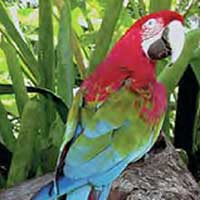
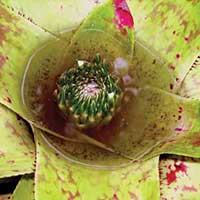

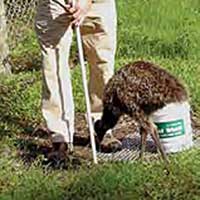
 About Theme Parks, Zoos & Tropical Design
About Theme Parks, Zoos & Tropical Design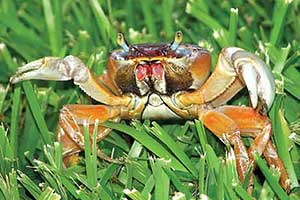 Integrated Pest Management in a Zoological Theme Park, Wing Beats the Journal of the American Mosquito Association
Integrated Pest Management in a Zoological Theme Park, Wing Beats the Journal of the American Mosquito Association The Environmental Lawn
The Environmental Lawn Design with Integrated Pest Management
Design with Integrated Pest Management Creating Islands in Aquatic Ecosystems
Creating Islands in Aquatic Ecosystems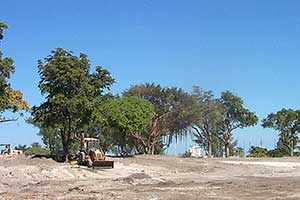 Building a New Jungle - Contouring the Site and Creating a Tree Canopy
Building a New Jungle - Contouring the Site and Creating a Tree Canopy Watson Island - Remaking History
Watson Island - Remaking History The Gardens at Parrot Jungle Island, The First Year
The Gardens at Parrot Jungle Island, The First Year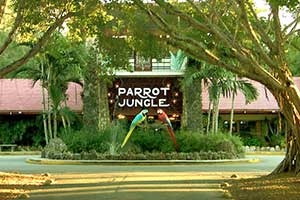 Parrot Jungle & Gardens
Parrot Jungle & Gardens